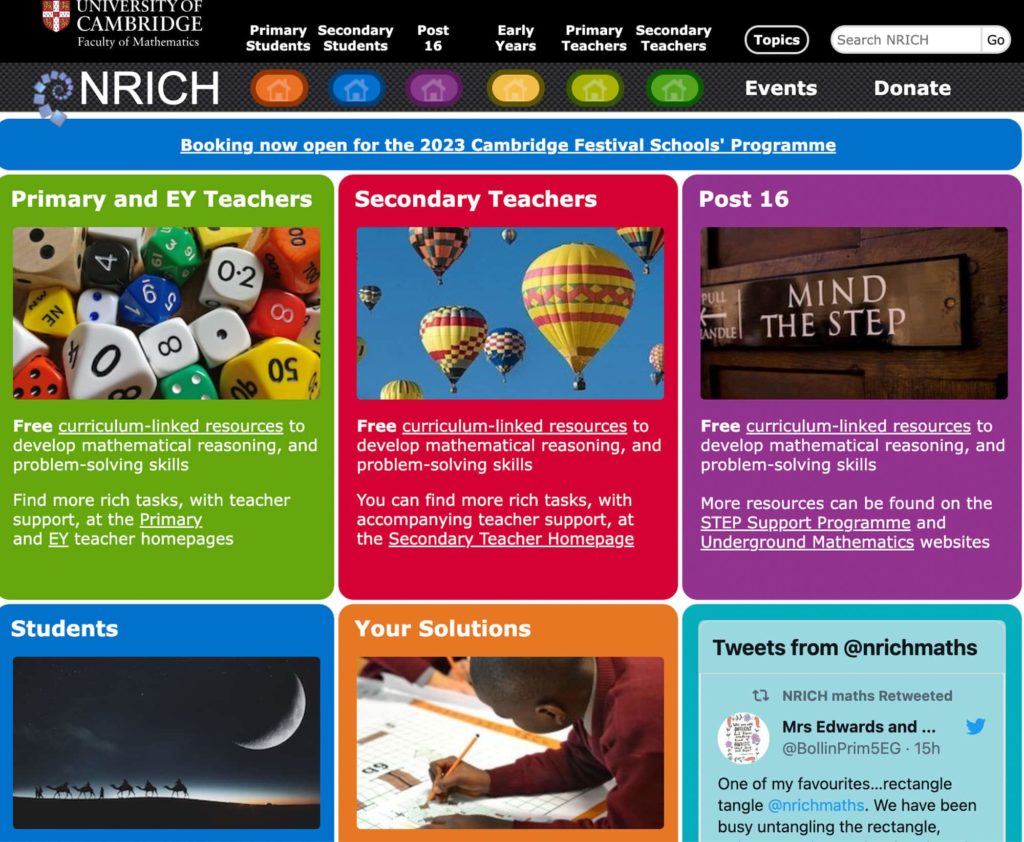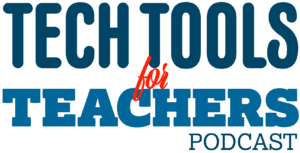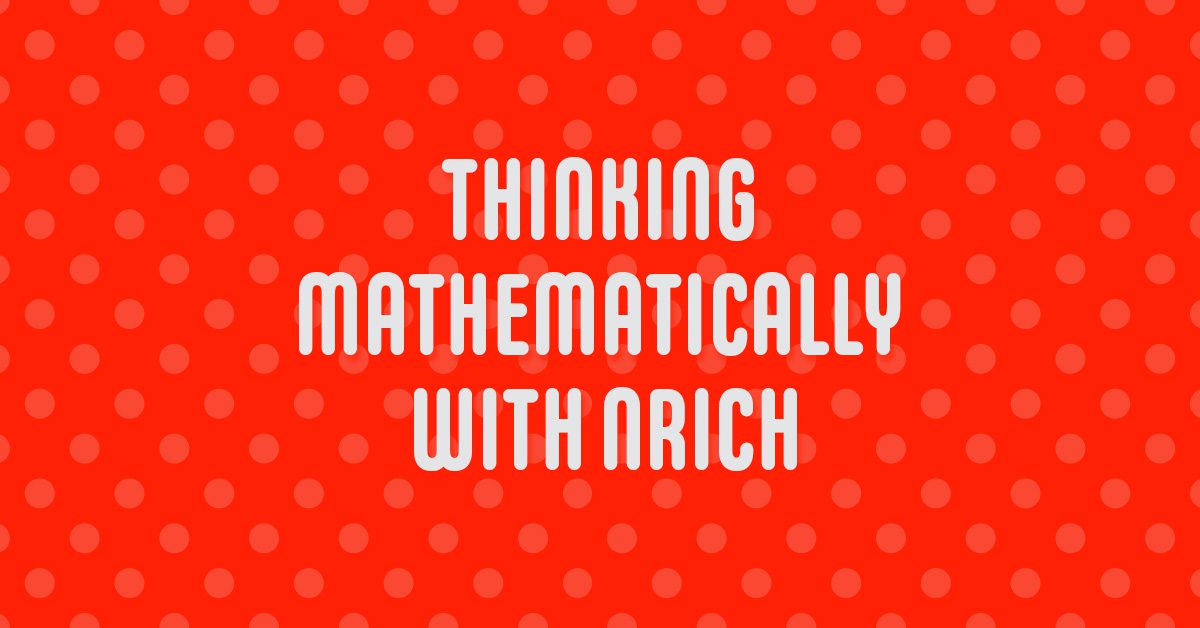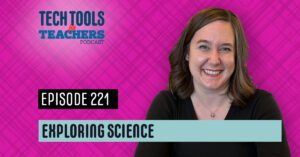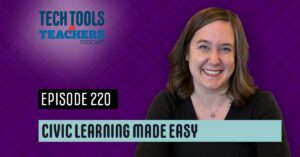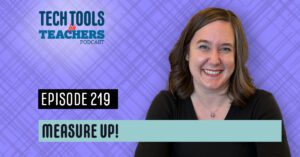Shanna Martin 0:19
Thanks for listening to the Tech Tools for Teachers Podcast, where each week we talk about a free piece of technology that you can use in your classroom. I’m your host, Shanna Martin. I’m a middle school teacher Technology and Instructional Coach for my district. And
Fuzz Martin 0:34
I’m her producer and husband Fuzz Martin, just making sure this all adds up each and every week.
Shanna Martin 0:41
Oh, maths and easy one. There’s all kinds of math puns
Fuzz Martin 0:45
there. There are I was trying to add them all up. And there were multiples.
Shanna Martin 0:55
Oh my goodness,
Fuzz Martin 0:57
trying to divide
Shanna Martin 0:59
and conquer today’s podcast episode. So it is episode 142. And we just have a quick one this week, we have a fun little math tool that I’m excited to share with everybody. There’s been so many things going on this week. It’s spend sickness and craziness. And we’re all back at it. And things are good. But we just got to catch up. Catching up, man. Yeah, I’m also very excited. Because just a couple weeks coming up. March 4 is Ed camp
Fuzz Martin 1:31
I know you love your ED camp.
Shanna Martin 1:33
I’m so excited. So I’d camp Elmbrook for all of you, Wisconsin Teachers that’s coming up March 4, it’s free. You can sign up on Eventbrite. And they don’t ask me to do any of this. I just love to go to Ed camp. So Ed camp, I’m excited. And I’ve thrown some swag at the Ellenbrook here.
Fuzz Martin 1:51
You’ve got some cute little swag bags. Yeah, a little bags,
Shanna Martin 1:54
little notebooks for anybody that goes yeah, yeah. Anyway, so if you want to join me, I’ll be there with a few of the staff for my school district too, which is kind of fun. So EdCamp Elmbrook, hooray, hooray. But anyway, so back to my thing. So the site that I found is, it’s cool. It’s an all inclusive kind of tool website. And the goal of this, it’s created through University of Cambridge. And it’s called enrich, but it’s n r i c h. So it’s like enrich without the without the E. Yeah, the website itself is N R IC h.maths.org. Okay, which I appreciate.
Fuzz Martin 2:32
Because in Europe, and in Australia, they call Math, maths.
Shanna Martin 2:39
And I call it math thing. So you know, and I call it hard. No, I
Fuzz Martin 2:44
don’t, I’m just kidding. I love.
Shanna Martin 2:45
You’re a math guy. I am. So with our math thing. In maths and math this week, this website is really cool. So what they have done, the University of Cambridge people, the enrich project, has put together a collection of resources to support mathematical thinking. So even if you’re not a math teacher, and you just want to build some of these skills into your classroom, you can use this website, it’s not just been for math teachers and math lessons, it’s for any teacher that wants to put more mathematical thinking into their classroom. So it’s broken down, which I love to how it’s like primary students and secondary students and post 16. So those of you in the US, you’ll notice that the ages are a little bit different than how we divided up those you that listen in other parts of the world, this is totally how you see things. So it is awesome. Either way, if you look at primary students, so that’s ages five to 11. And if you click on that little orange button there, it gives you the latest features. And then there’s news. And then there’s activities and games and thinking mathematically is they have different categories. And you pick your topic that you want to look at and click on it and lead your way. So we’re gonna look at the the latest feature or the lower primary collection. And when you open that up, it’s got these really cool, different activities and ways to build number sense into your classroom being resilient with numbers. And there’s an activities like, we just keep clicking, and it keeps leading to more activities and more ways of building this into your classroom. They have the shot box, and then there’s a game and there’s dice, and it shows you how it works and how to build your classroom. And that gives you questions to prompt your students to explain their thinking and then how to play the game. And there’s different activities that kind of go with each one. And it just walks you through each one. If there’s any, like supplies needed if you need like there’s a triangle activities that’s inside triangles. You can use those dot grids. Sometimes they’re used like they can look like those pegboards sometimes we use them with like rubber bands and things like that. I don’t think we use those with rubber bands anymore in the middle school though, because that turns into rubber bands flying across classroom,
Fuzz Martin 4:52
but I was never one of those kids.
Shanna Martin 4:55
But they also have those little dots just on the pen like pencil and paper where you can link to right triangles anyway. So it gives you the tools needed as well. Like if you need to print off, like print off this page, if you don’t have your own dot paper or your own dot, things like that. So it does give you some of the supplies or tells you leads you in the way of what you’re going to need for the activity. And then it also has related content, it will tell you like consecutive numbers and rolling the dice and different activities that also kind of build on the same skills. And that walks you through, they have lower primary, they have upper primary. And then if you have middle
Fuzz Martin 5:29
primary, no, being silly, because that’s not how it’s defined. No, it was a joke I know.
Shanna Martin 5:36
So and then you can move up soon as the latest features do the same thing in the secondary students, the activities and games are pretty cool. What they are is they’re not all just games on the computer. But like they have algebra activities and games and equations and formulas and gives you the stages. And from there, again, it’s all broken down, it’s really easy to understand, it will give you the games are not like computer games, necessarily. They’re going to be like principles with directions and things that you can lay out in your classroom. So really serving as a resource. Correct. Some of them do have a video that then goes with it kind of walks you through how to play the game, some of them do not kind of just depends on the activity. But it’s neat, because like it explains this is what it should look like. These are the questions you should ask. This helps your students thinking and how and why and then explains the curriculum. I also appreciate that it is in pounds. So it kind of gives you some thinking and discussing how if you are in the US how like numbers and money and things are different in other countries, which I always appreciate those discussions as well. And then also, within these different categories, they like be a mathematician, which is another category. And it’s articles on thinking mathematically and how to find that in your daily life, which I think is so huge as making those connections with this is what’s going on in your life. Right? This is how it applies in the classroom, and making those connections. So like exploring and noticing structure is one of their things. And then, like finding that in the real world, and how many numbers can be expressed this way. And what does this look like here. And it’s really neat. And each thing leads to more activities and thinking and ways to build this in your life. They have a whole number sense thing and calendar tapers. So using a calendar in your daily life, and then how those numbers can play out. Like just there’s a lot of cool, different activities. So that’s just through primary students, secondary students, they also have post 16.
Fuzz Martin 7:40
So in Europe, I guess that would be like, there’ll be after high school or that’s where
Shanna Martin 7:45
they make the decision of like which pathway they go to. Okay. And then from there, they have the same setup. So you can feature articles they have, how you can be a mathematician resources and a lot of this like the post 16 stuff I started going through it is cosines, trigonometry, trig graphs, they have a whole thing. I’m kind of excited. I want to show somebody, I don’t know, I did share this with a high school math teacher. I hope that she ends up doing this. But they have a whole lesson on the Loch Ness Monster. And trigonometry nice. And let like these following graphs are not monsters, but they help you with functions and periodic and involve sines cosines. And absolutely, it’s fantastic. And the best part is the image of the Loch Ness Monster is exactly like the soup label that ladle that we have.
Fuzz Martin 8:37
I do have a lucky we have a likeness.
Shanna Martin 8:39
So anyway, so it’s just messy. Messy. Yes. And so again, they have mathematical thinking and support you can use across the curriculum, not just in your math class and across the board in all ages, which is awesome. They also have a section for early years, like birth to five, okay, and easy ways to kind of build those activities into your life. You know, just teaching kids while you’re at home and things like that. And then they have resources specifically for teachers. So that’s all like lesson stuff you can laid out with your students, you can give them the websites and links to explore if you want to. They also have like building curriculum and support and news and recent solutions, and all kinds of great features for them primary and secondary teachers and curriculum based things. So there are so many resources in this site and both interactive and printable and they have professional development. And it’s just this great resource to build mathematical thinking into your classroom, whether you’re a math teacher or not. I’ve had it was kind of a fun find and was very excited and I shared it with our math teachers and they were very sparkly about it. So I think that we have found a winner, winner winner when it comes to enriching our lives with math, maths. maths or mapping?
Fuzz Martin 10:01
All of the things do they in England? Do they call it math sings?
Shanna Martin 10:06
I’m guessing that No,
Fuzz Martin 10:08
I don’t I didn’t think that was what it was either, but I thought it’d be fun to ask the question, you know? Yes, exactly. It’s
Shanna Martin 10:17
super important. You, so I wanted to share that with everybody. I appreciate you all. Thanks for tuning in. This has been the Tech Tools for Teachers podcast. If you ever have any questions, you can find me on Twitter at smartinwi and if you want to get more information on the links to the technology discussed in this episode, you can visit smartinwi.com. If you’d like to support the show, please consider buying me a coffee or to visit buymeacoffee.com/smartinwi or visit smartinwi.com and click on that cute little purple coffee cup. Your donations help keep the show going. New episodes each week. Thanks for listening, go educate and innovate
Fuzz Martin 10:56
the ideas and opinions expressed here on the Tech Tools for Teachers podcast are those of the author Shanna Martin and not of her employer. Prior to using any of the technologies discussed on this podcast please consult with your employer regulations. This podcast offers no guarantee that these tools will work for you as described, but we sure hope they do.
